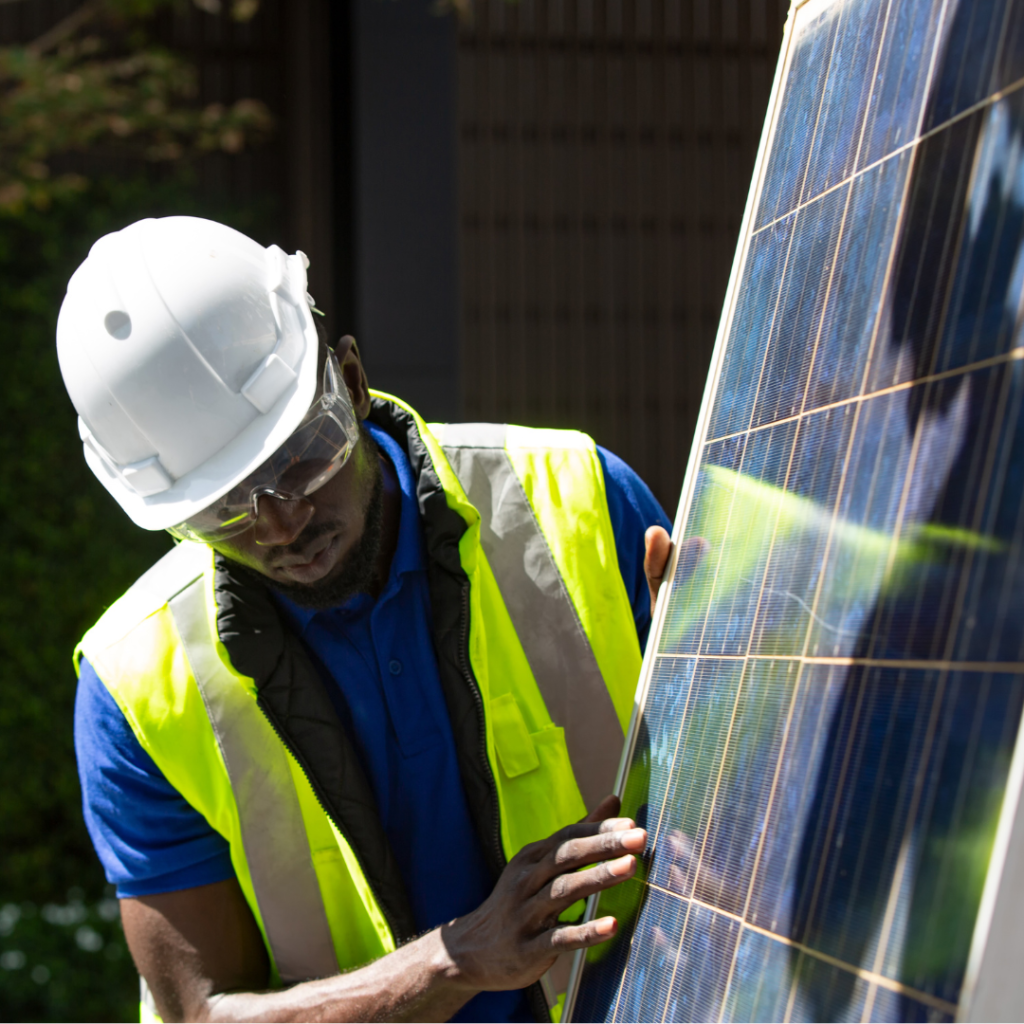At Unique Solar Solutions, we understand that choosing to install solar is a big step toward lowering electricity bills and embracing sustainable energy. But before we can mount panels and start harnessing the power of the sun.
Not every rooftop is ideal for solar panel installation, and different materials, angles, and conditions can impact efficiency. Let’s walk through what makes a roof suitable for solar and what to consider before making the switch.

Roof Types That Work Best for Solar Panels
1. Pitched Roofs: The Ideal Choice
A sloped roof, particularly one facing north in Australia, is an excellent candidate for solar panels. These rooftops allow for optimal sun exposure, ensuring maximum energy production throughout the day. Whether covered in terracotta tiles, asphalt shingles, or Colorbond steel, a pitched surface provides a stable foundation for mounting panels at the perfect angle.
If your roof doesn’t naturally have the right tilt, don’t worry—adjustable racking systems can be used to position panels for the best sun exposure.
2. Metal Roofs: Lightweight and Solar-Friendly
Metal roofing, including Colorbond and corrugated iron, is one of the easiest surfaces for solar panel installation. Not only is it lightweight and durable, but its smooth texture also allows for simple and secure mounting. Plus, metal reflects heat efficiently, helping keep your home cooler in summer.
Solar panel installers often prefer metal roofs because they require fewer roof penetrations, reducing the risk of leaks. If you have a metal structure, installing it will likely be a seamless process.
3. Tile Roofs: Suitable but Requires Extra Care
Terracotta and concrete tiles are common across Australian homes and are still very much solar-compatible. However, they can be more fragile than metal or asphalt, meaning the installation process needs extra precision. A professional team will know how to carefully lift tiles and secure panels without causing damage.
If your home has a tiled roof, you may need additional bracketing to ensure a secure fit, but rest assured—it’s entirely possible to go ahead with this setup.
4. Flat Roofs: Extra Planning, Great Potential
A level rooftop might seem less than ideal, but it can still be a fantastic option. Instead of placing panels flush against the surface, installers use tilted mounting systems to angle them towards the sun. This custom approach means a flat roof can sometimes be more versatile than a naturally sloped one.
Is Your Roof Clean Energy Ready?
Even if you have the ideal surface, it’s important to assess:
1. Age & Condition – Is your roof structurally sound? If it’s due for replacement, consider upgrading before installing panels.
2. Shading Issues – Are trees, chimneys, or neighbouring buildings blocking sunlight? Strategic panel placement can help minimise these obstacles.
3. Available Space – Is there enough unshaded area to accommodate the required number of panels?
How Solar Panel Installers Help
A professional assessment is essential to determine if your home is truly ready. Skilled solar panel installers evaluate your roof’s material, orientation, and structural integrity to design a system that maximises efficiency. They also ensure panels are secured correctly, preventing long-term damage to your home.
No matter your roof type, there’s a solution that can work for you. However, before installation begins, one crucial factor needs consideration—your roofing material. Not every surface is equally suited and choosing the right approach can make all the difference in efficiency, longevity, and ease of installation.

Roofing Materials: What Works Best?
Let’s take a closer look at which roofing materials work best and what you need to know before making the switch.
Best Roofing Materials for Your Panels
1. Metal Roofs – A Perfect Match
If you have a metal roof, you’re in luck—this is one of the most compatible surfaces. Metal is lightweight, durable, and often requires minimal modifications for installation. Standing seam metal roofs are particularly ideal because panels can be attached using clamps, avoiding the need for drilling and reducing the risk of leaks.
Additionally, metal roofs have a long lifespan, often lasting 40-70 years, which means they’ll likely outlast your solar panels. That’s one less thing to worry about!
2. Tile Roofs – Requires Extra Care
Terracotta, concrete, or slate tiles are common across Australian homes and can certainly support a green-energy system. However, tile is more fragile than metal, meaning installation requires extra precision. Our team ensures careful handling during the process to prevent breakage, and when necessary, we replace tiles with specialised mounting brackets to keep everything secure.
Though installation may take a little more time compared to other materials, tile roofs remain a viable and efficient option.
3. Asphalt Shingles – Reliable and Easy to Work With
Asphalt shingle roofs, though more common in North America, are still found in some Australian homes. These are solar-friendly, allowing for straightforward mounting with traditional racking systems. However, because asphalt shingles have a shorter lifespan (around 20-25 years), it’s important to assess the condition of your roof before installation.
If you’re considering opting for this sustainable energy and your roof is nearing the end of its lifespan, it might be worth replacing it before installation to avoid the hassle of removing and reinstalling panels later.
4. Flat Roofs – A Custom Approach
A flat roof doesn’t mean you can’t have solar, but it does require a different strategy. Unlike sloped surfaces, where panels naturally tilt toward the sun, flat roofs need tilted racking systems to optimise exposure. Fortunately, these systems allow for greater flexibility in positioning and can sometimes generate even better efficiency.
The key with flat installations is ensuring proper drainage and preventing water pooling beneath the panels. With the right setup, a flat roof can be a fantastic option for solar energy production.
How Solar Panel Installers Can Help
Choosing the best setup for your roofing material isn’t something you need to figure out alone. Professional solar panel installers assess factors like roof type, structure, and sun exposure to determine the ideal system for your property. They also ensure secure mounting, preventing any long-term damage to your home while maximising performance.
No matter what type of roof you have, going for this green energy is still an option. The key is selecting the right approach to ensure durability, efficiency, and seamless integration.
Thinking about going for sun-driven energy but unsure if your roof is the right fit? Contact us today for a professional evaluation and take the first step toward a cleaner, more cost-effective future! 🌞



